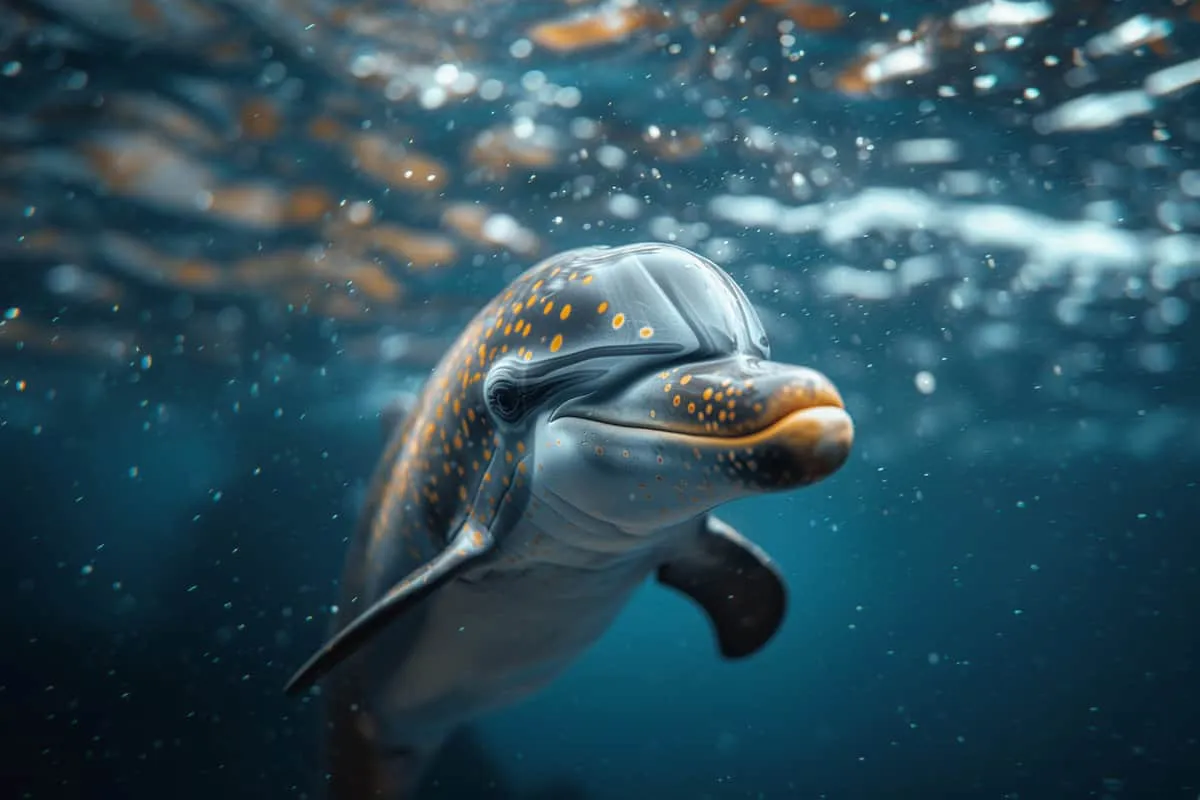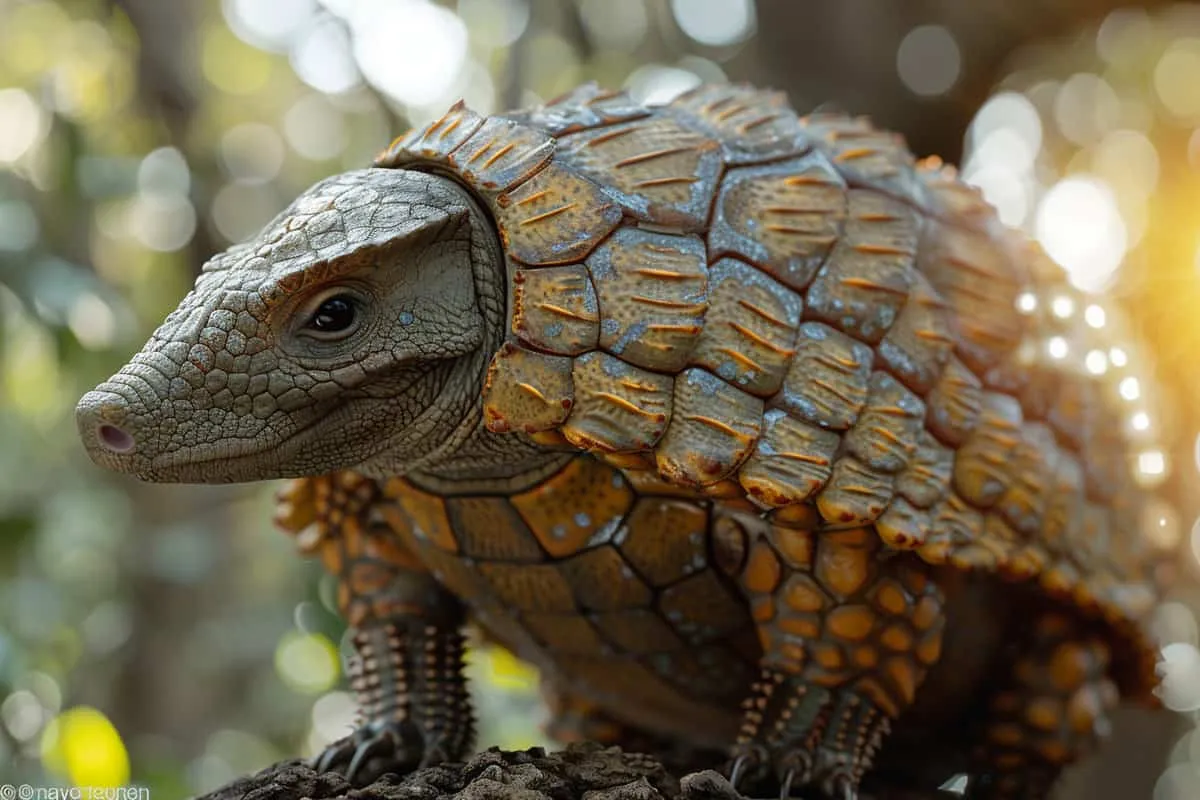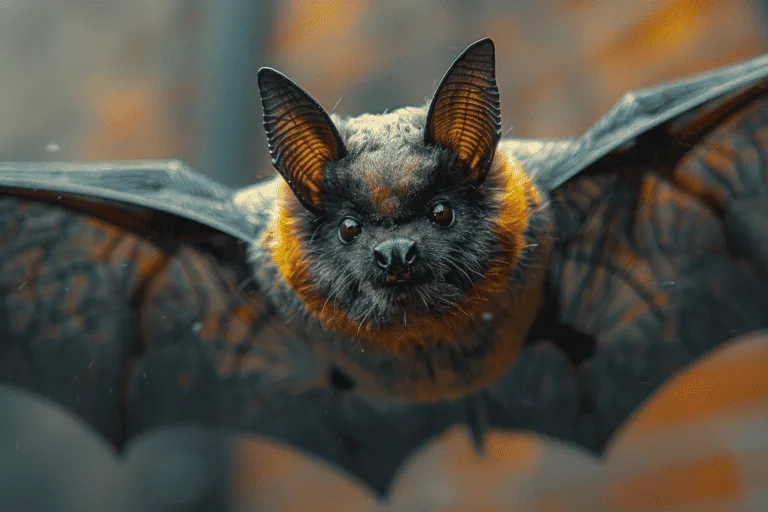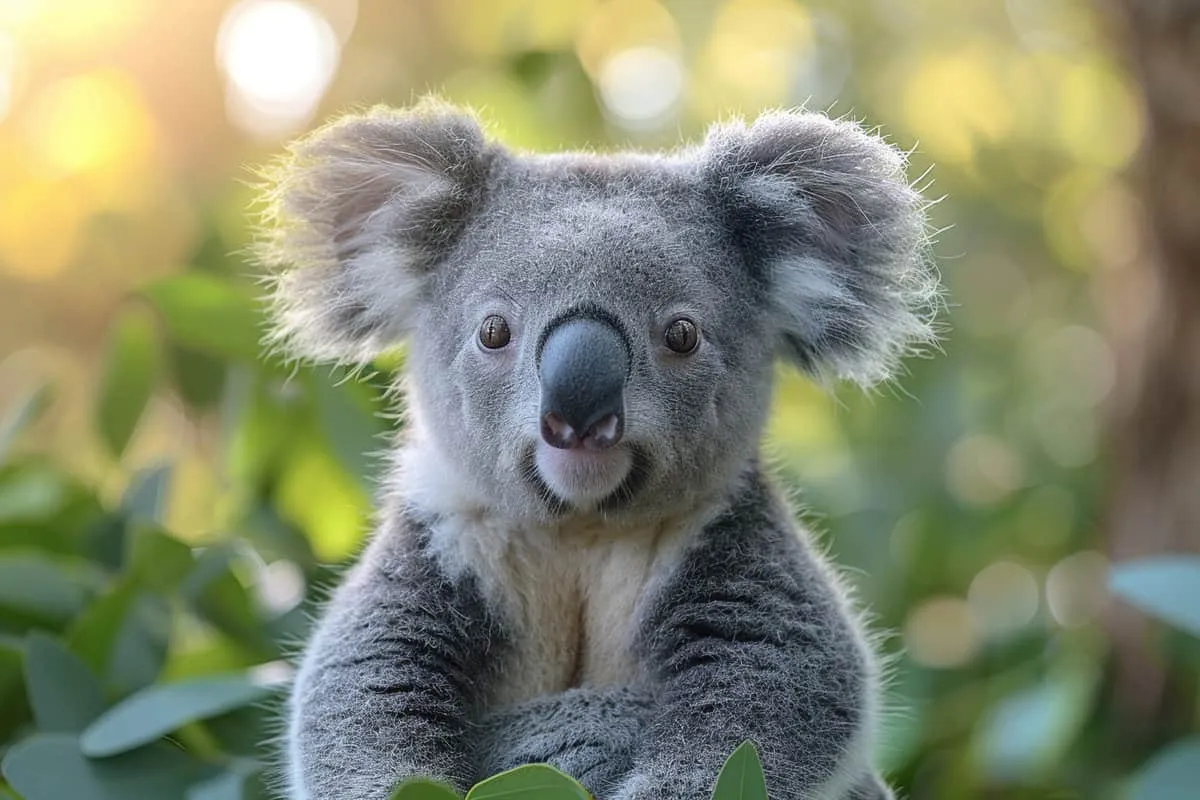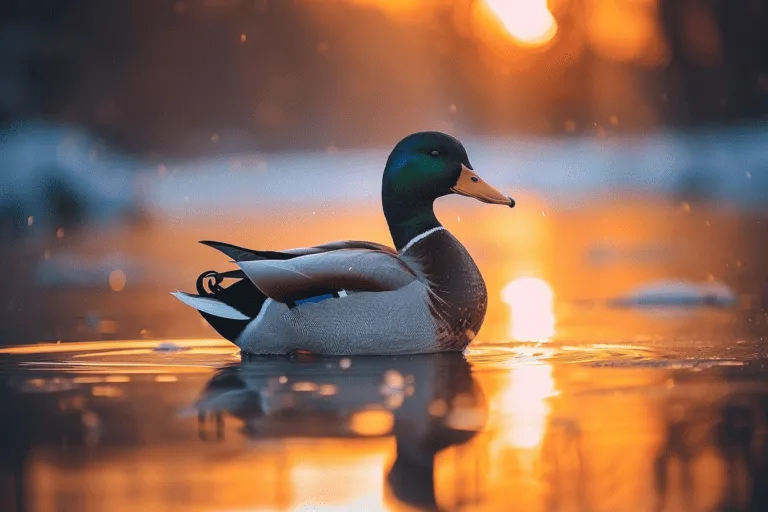10 Dolphin Facts (Unveiling Their World, From Echolocation to Societies)
Dolphins are not just adorable; they’re incredibly smart, too. With their playful nature and impressive intelligence, these sea mammals captivate everyone’s hearts.
They communicate in ways that would put any secret code to shame and showcase skills that make them the geniuses of the ocean world.
But there’s more to dolphins than meets the eye. From their unique social behaviors to surprising facts about their abilities, we’ve got a list that will make you see dolphins in a whole new light.
Ready for an ocean adventure? Scroll down for our top dolphin facts that will surely splash excitement into your day.
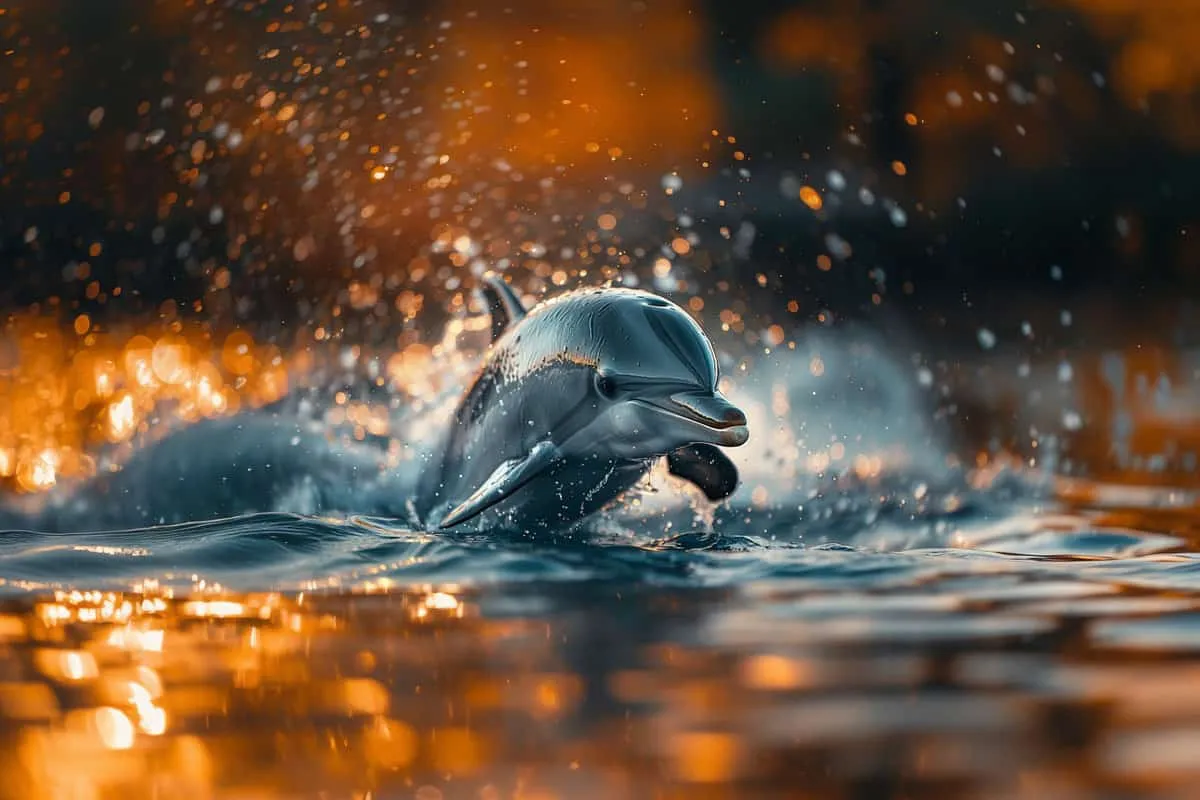
1. Dolphins Use Echolocation to Navigate and Hunt
Dolphins have a superpower called echolocation. This means they make clicking sounds that travel through the water.
When these clicks hit something, like fish or a rock, they bounce back. By listening to the echoes, dolphins can tell where things are, how big they are, and even what shape they might be.
Imagine being in a completely dark room but still able to “see” everything around you just by making sounds. That’s how dolphins find their food in murky waters where it’s hard to see.
They emit rapid clicks that help them detect prey such as fish and avoid getting tangled in fishing nets or bumping into underwater obstacles.
Echolocation is also their best tool for staying safe from predators. In the vast ocean where dangers lurk in every corner, being able to sense threats before seeing them gives dolphins an edge for survival.
Moreover, this ability allows them to navigate confidently during night time or through dark depths of the oceans where sunlight doesn’t reach. Their natural sonar system guides them through complex environments without missing a beat.
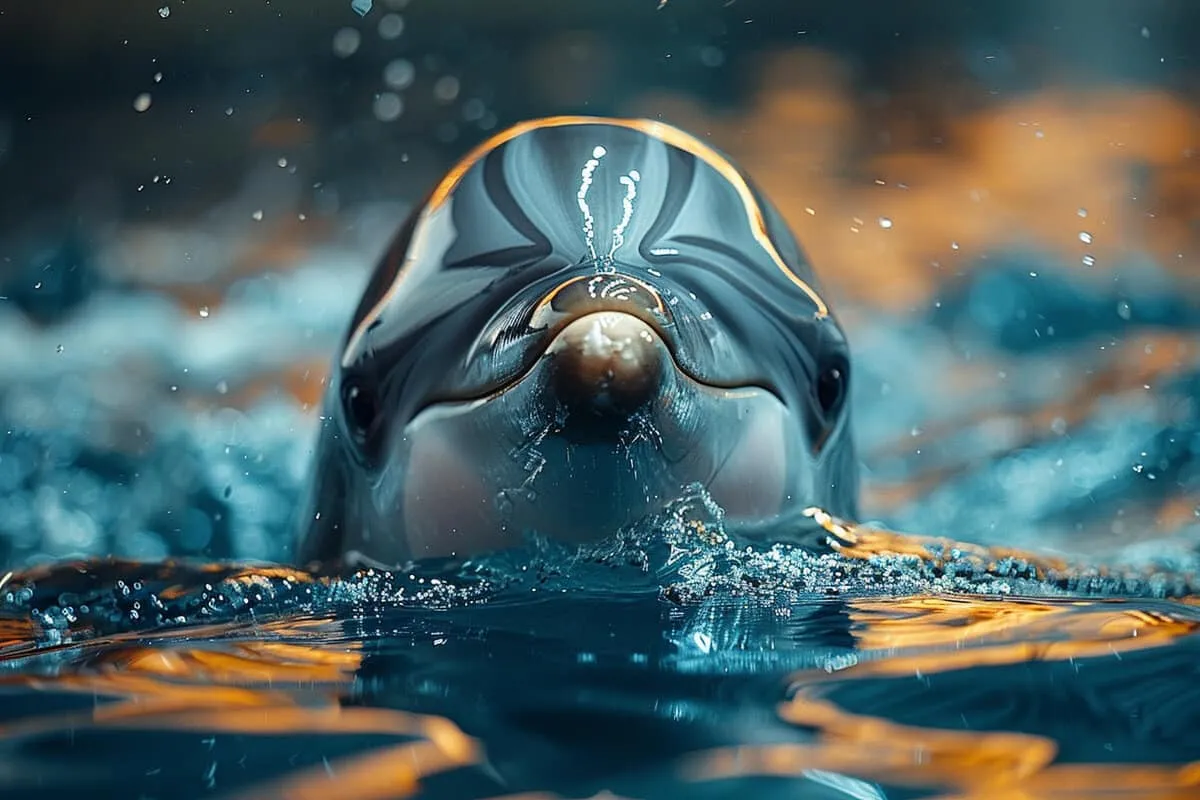
2. There are Over 40 Species of Dolphins
Dolphins are fascinating creatures, with over 40 different species calling our oceans and rivers home. Each one of these species brings something unique to the dolphin family.
From the well-known bottlenose dolphins that often grace television screens to the exotic pink river dolphins found in South America, there’s an incredible variety.
These species vary widely not just in appearance but also in size and habitat preferences.
For example, while some dolphins like the massive killer whale (yes, it’s technically a dolphin!) can grow up to 30 feet long, others such as the Maui’s dolphin don’t get much larger than 6 feet.
Their colors range from the common grey to shades of pink and even spotted patterns depending on their specific type.
This diversity is a testament to how adaptable dolphins are, thriving in both saltwater oceans and freshwater rivers across every continent except Antarctica.
Dolphins have managed to make homes for themselves everywhere from cold northern waters all the way down to warmer tropical seas. Their widespread presence around the globe highlights not only their adaptability but also underscores how important they are for healthy marine ecosystems.
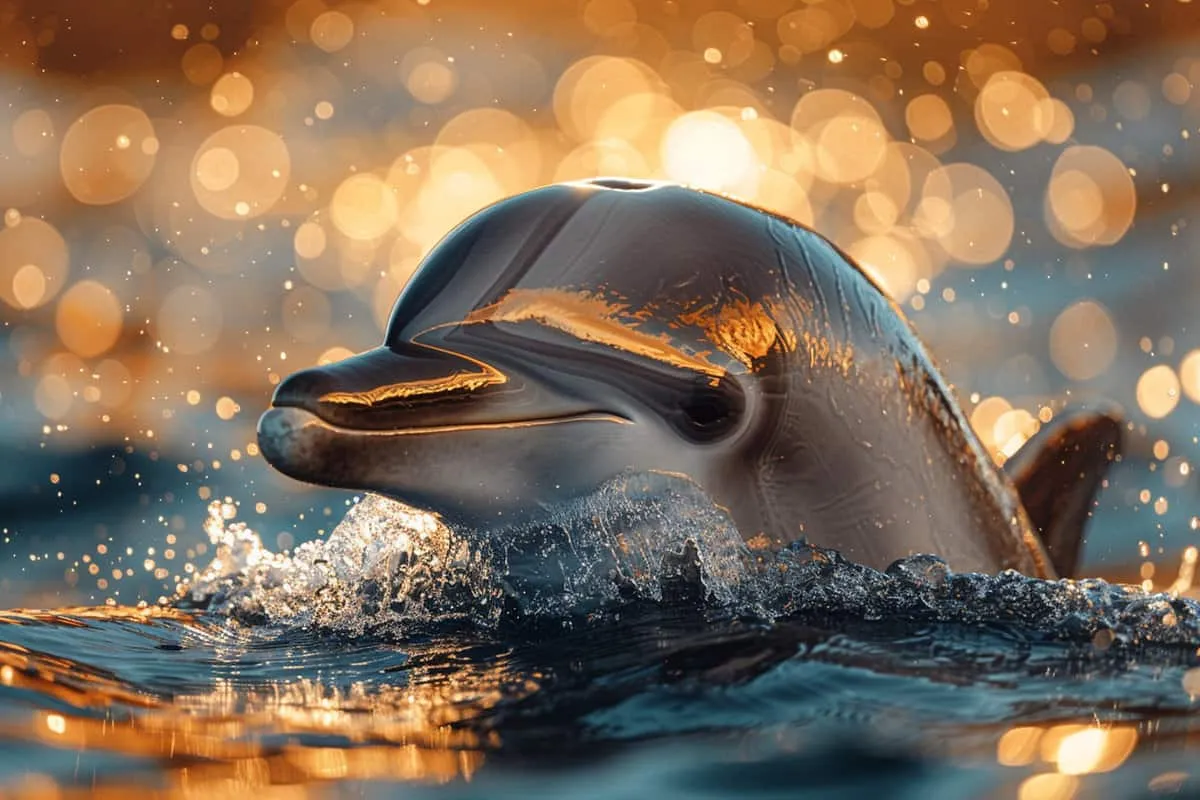
3. Dolphins Have Complex Social Structures
Dolphins are not just playful creatures of the sea; they have complex social structures that could rival many human societies.
They live in groups known as pods, which can range in size from a few individuals to over a thousand. Within these pods, dolphins form strong social bonds that last for years.
The hierarchy within a pod is crucial for their survival. It affects everything from hunting strategies to mating practices.
The higher-ranking dolphins often lead the group during hunts and have first access to food and potential mates.
Social interactions among dolphins are diverse and intricate. They play together, using games as a way to teach younger members of the pod important survival skills.
Cooperation is key when they hunt, demonstrating an impressive level of teamwork by herding fish into tight balls or taking turns charging through the school to feed.
Communication plays a significant role in maintaining these social bonds. Dolphins use a complex mix of sounds, body language, and even skin-to-skin contact to express emotions, intentions, or information about their environment.
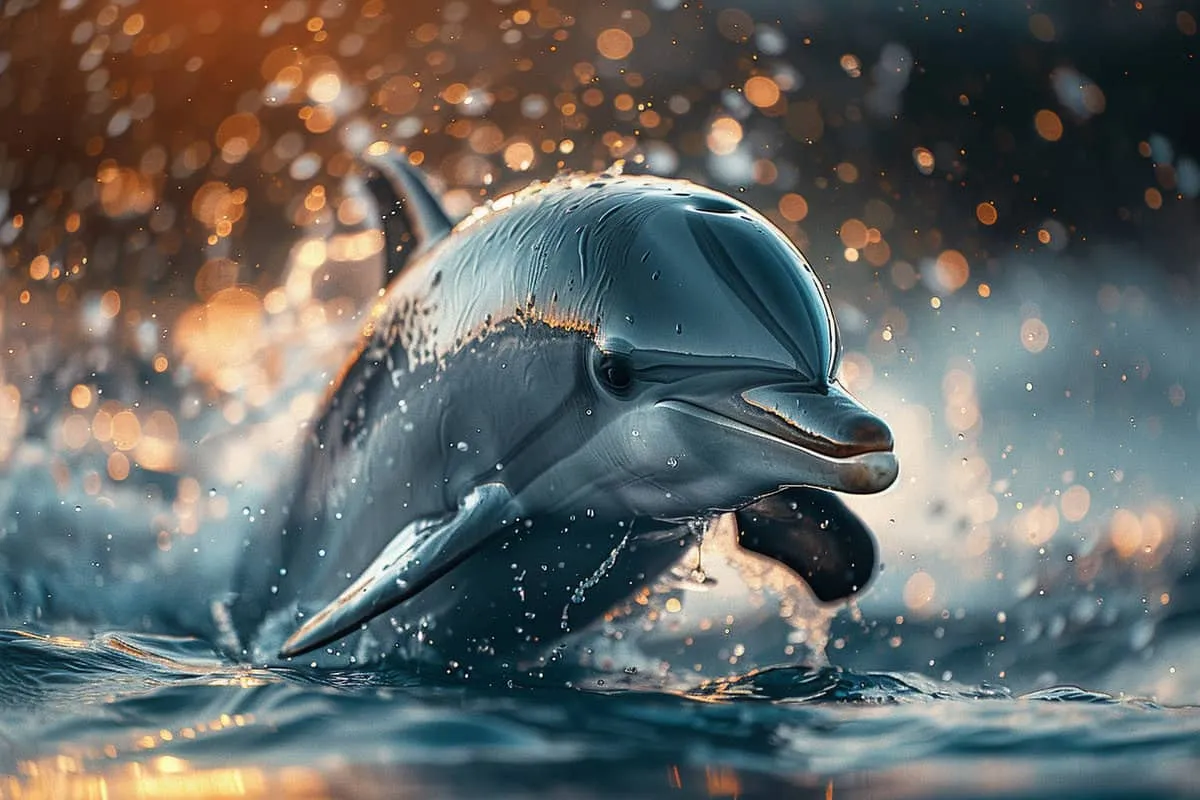
4. Dolphins Can Exhibit Altruistic Behavior Towards Other Species
Dolphins are not just friendly and intelligent; they also show kindness towards other species. This behavior is known as altruism, where animals help others without expecting anything in return.
One of the most remarkable examples of this is when dolphins protect swimmers from sharks. They do this by surrounding the swimmer, forming a protective barrier against the shark.
It’s like having your own personal bodyguards in the ocean!
Dolphins also have a heart for their kind. When one dolphin is injured, others will assist it to reach the surface so it can breathe easier.
Imagine being held up by friends so you could catch your breath – that’s what dolphins do for each other.
But their kindness doesn’t stop with their species or even humans. Dolphins have been observed guiding lost whales back to sea, helping them find their way home.
It’s as if they understand the struggles of being lost and step in to guide these massive creatures back to safety.
5. The Orca, or Killer Whale, is Actually the Largest Dolphin
Orcas, often called Killer Whales, are actually the largest members of the dolphin family. Surprisingly to many, they can grow up to 32 feet long. This fact alone sets them apart as majestic creatures of the sea.
Despite their menacing name, orcas share a closer genetic relationship with dolphins than with whales. This connection highlights their place within the toothed whale category, which includes all species of dolphins and porpoises.
As top predators in marine ecosystems, orcas have a diverse diet that showcases their adaptability and prowess.
They feast on fish and seals but don’t stop there; they’re also known for hunting other whales.
This wide-ranging diet underlines their role as apex predators – no creature is safe from an orca on the hunt.
Here’s what makes orcas fascinating:
- Size: Up to 32 feet long.
- Family Ties: More closely related to dolphins than whales.
- Diet: Includes fish, seals, and even other whales.
Understanding these aspects of orcas not only informs us about their biological classification but also about their critical role in marine life balance. Their unique position at the top of the food chain affects every level below them.
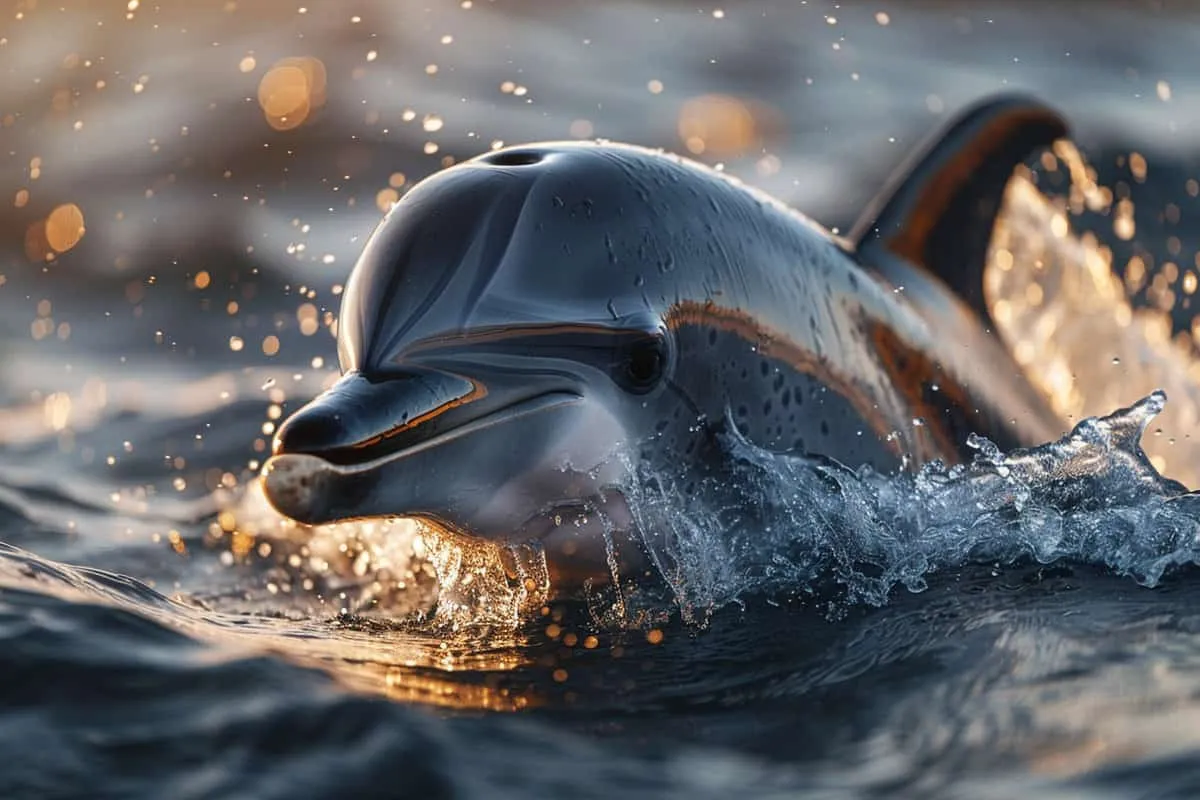
6. Dolphins Have a High Level of Intelligence Comparable to Great Apes
Dolphins showcase a remarkable level of intelligence, often compared to that of great apes. Their brains are large and complex, especially when considering their size in relation to their body.
This brain power is not just for show; dolphins use it in many fascinating ways.
One way scientists measure intelligence in animals is through problem-solving skills and self-awareness.
Dolphins ace these tests with flying colors.
For example, when placed in front of a mirror, dolphins can recognize themselves, an ability known as self-awareness. This trait is rare in the animal kingdom and suggests deep cognitive abilities.
Moreover, dolphins are adept at learning complex tasks. They have been taught to understand symbols and signs by researchers, demonstrating an ability to grasp abstract concepts.
This skill set goes beyond simple tricks; it shows a sophisticated understanding of communication.
Dolphins also engage in play which is another sign of intelligence. They use tools like marine sponges on their snouts while foraging on the sea floor to protect their sensitive noses from getting scratched or injured by sharp objects or rough surfaces—a behavior observed mainly among humans and some other primates until now.
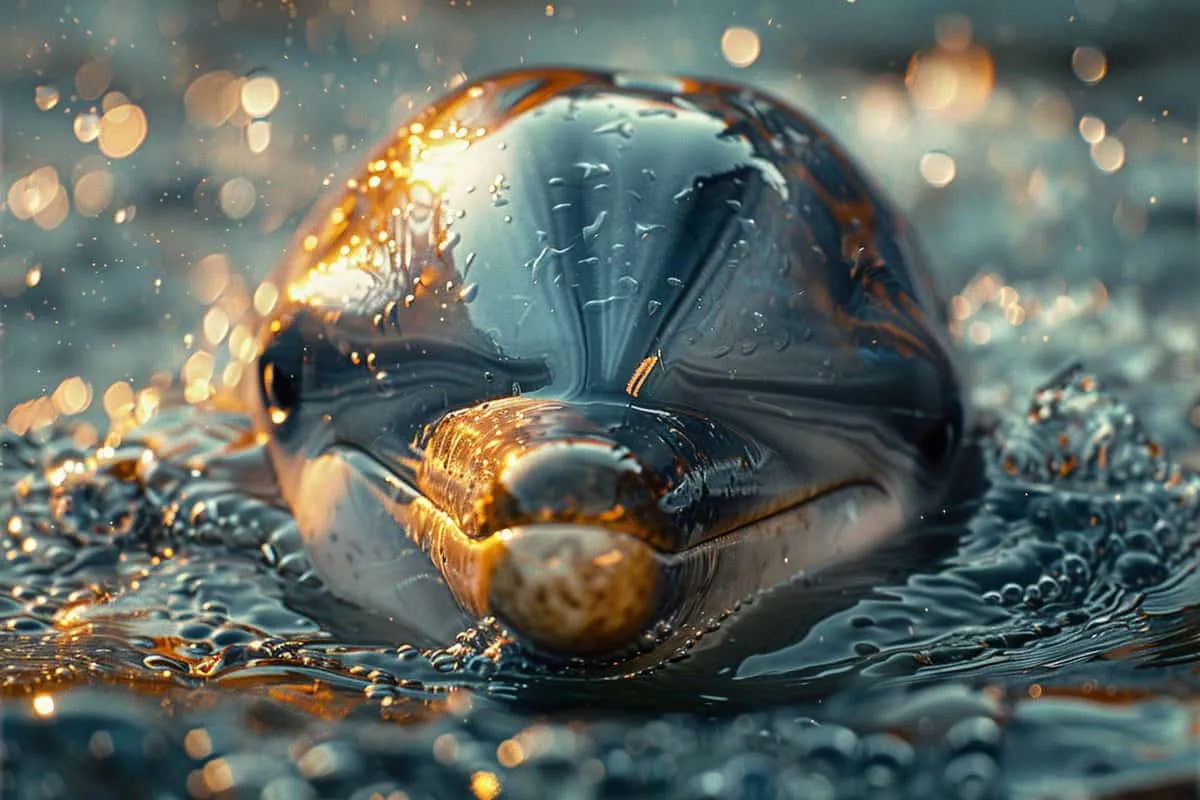
7. They Communicate Using a Variety of Sounds and Body Movements
Dolphins have their own unique way of communicating, which is not just fascinating but also shows how intelligent these creatures are. They use a variety of sounds and body movements to talk to each other.
One interesting fact is that dolphins use whistles for individual identification. It’s like they’re calling each other by names!
Imagine if we could whistle and our friend from across the park would know it’s us without even looking.
When you see a dolphin slapping its tail or body on the water surface, pay attention. This behavior can mean different things – sometimes, it’s a sign of excitement; other times, it might indicate distress.
It’s their way of expressing emotions or alerting others.
During hunting or when moving as a group, dolphins rely on complex vocalizations for coordination.
These sounds help them work together efficiently, whether they’re rounding up fish for food or navigating through the ocean.
It’s clear that communication among dolphins involves more than just making noises; it’s an intricate system involving sounds and physical gestures. Each whistle, click, or slap has its own meaning and purpose in dolphin society.
8. Some Dolphin Species Can Swim Up to 20 Miles Per Hour
Dolphins are fascinating creatures, and their ability to swim at high speeds is one of their most impressive features. They can reach up to 20 miles per hour!
This incredible speed helps them in many ways.
First off, being fast allows dolphins to escape from predators that might want to make a meal out of them. The ocean can be a dangerous place, but dolphins have this amazing skill to help keep them safe.
Their speed also comes in handy when they’re hungry.
Dolphins eat fish and squid which can be pretty quick themselves. Being able to swim fast means dolphins can catch their food more easily, ensuring they stay well-fed and healthy.
So how do they do it? A lot has to do with the shape of their bodies.
Dolphins have streamlined bodies that reduce drag as they move through water. This means there’s less resistance against them, allowing for smoother and quicker movement.
But the real power comes from their tails. Dolphin tails are incredibly strong and flexible, acting like powerful engines propelling them forward at high speeds.
9. Dolphins Give Birth to a Single Calf Every Few Years
Dolphins, these intelligent blooded mammals, have a unique way of bringing new life into the world. A dolphin mother carries her calf for about 12 months before giving birth.
This long pregnancy ensures that the calf is well-developed and ready for life in the ocean.
After birth, the bond between mother and calf is strong. The mother nurses her young one for up to two years.
During this time, she teaches the calf essential survival skills. These skills are crucial for navigating their aquatic world and finding food.
Calves stay close to their mothers during these formative years. They learn by watching and mimicking everything their mothers do.
This period of learning helps them become independent dolphins who can thrive on their own.
However, this slow reproduction rate has a downside. It makes dolphins vulnerable to population decline.
Since they don’t give birth often and invest so much time in each calf, losing even a few individuals can impact the whole group’s numbers.
10. They Can Dive Up to 1,000 Feet Deep in the Ocean
Dolphins have some pretty cool abilities, and one of them is their knack for deep diving. They can go down as far as 1,000 feet in the ocean!
This is thanks to their special bodies and how they work.
First off, dolphins have bigger lungs compared to us. This means they can hold more air when they dive deep underwater.
It’s like having a super big breath-holding contest with nature—and dolphins are winning!
When they’re not playing near the surface, dolphins head down into the deeper parts of the sea to look for food.
Down there, it’s dark because sunlight can’t reach that far. But dolphins don’t mind; they’re on a mission to find some tasty snacks.
The pressure way down in the ocean would be too much for most creatures, but not for dolphins.
Their bodies are made to handle it without any trouble. Think about going really deep in a swimming pool and feeling your ears pop—that doesn’t bother dolphins at all.
Frequently Asked Questions
How do dolphins find their way around and hunt in the ocean?
Dolphins use echolocation, kind of like underwater sonar. They send out sound waves that bounce off objects, helping them navigate and catch their meals.
Exactly how many species of dolphins are there?
There’s a big family reunion happening under the sea with over 40 different dolphin species. It’s quite the gathering!
What’s so special about dolphin social life?
Dolphins hang out in complex social groups, just like us humans. They form tight-knit communities where everyone has each other’s backs.
Can dolphins really help other animals?
Yes! Dolphins have been known to show kindness to other species, not just their own kind. It’s like they’re the superheroes of the sea.
Is it true that killer whales are actually dolphins?
Surprise! The orca, also known as the killer whale, is indeed the largest member of the dolphin family. Talk about a plot twist.
How smart are dolphins compared to other animals?
Dolphins are brainy creatures with intelligence levels comparable to great apes. They’re pretty much the Einsteins of the ocean world.
How do dolphins talk to each other?
They use a mixtape of sounds and body movements. These include everything from clicks and whistles to leaps and flips.

